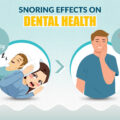
Uncategorized
edental
27 February 2021
WHEN ARE DENTAL X-RAYS DONE? – ELITE DENTAL CARE TRACY
X-rays are used in the healthcare industry to detect internal damages to the body. Similarly, dental X-rays are used in the dental industry to detect dental issues at an early stage. When the dental defects are usually visible inside the mouth, what is the necessity for a dental x-ray? Will the radiations have an adverse effect on oral health? Such speculations might arise in your mind when the dentist suggests you for an x-ray. Here is a detailed overview of what are dental x-rays; how are dental x-rays useful, and when are they done.
WHAT IS A DENTAL X-RAY?
X-rays or radiographs are the images that give a clear picture of the organ that is imaged. Dental x-rays provide images of the teeth and internal tissues that help the dentist evaluate your oral health. The radiations used are of very low intensity and do not cause any adverse effects on dental health.
WHY ARE DENTAL X-RAYS DONE?
• Dental x-rays are done to detect dental issues that are usually not visible to the naked eyes like the narrow areas in-between the teeth or gums.
• To detect the decay beneath the fillings and bone loss due to gum diseases.
• As an initial preparatory step before dental implantation, fitting braces or other dental procedures.
• To detect dental abscess.
• To check if adult teeth are growing behind baby teeth in kids.
• To determine if there is enough space in the mouth for the incoming set of teeth in the kids.
BENEFITS OF DENTAL X-RAYS?
Dental X-rays facilitate early detection of dental problems like cavities, impacted teeth and tooth decay. Early detection of diseases saves you money, time and minimizes the complications.
Cavities wear away the enamel, which is the protective cover of the teeth. When the enamel wears away, cavities extend to the inner tissues of the teeth and then the root of the teeth. When the infection reaches the root, you feel a sudden pain while consuming foods and drinks of varying temperatures and textures. This is known as the sensitivity of teeth. Ultimately, the tooth decays and then falls off.
However, if the cavities are detected at an initial stage, you can considerably avoid the severe damage to the teeth and protect your natural teeth. When the detection is done at an early stage, treatment is also done early, thus preventing further damage, saving money, saving time and also incur decreased pain.
WHEN ARE DENTAL X-RAYS DONE?
Dental x-rays are done annually along with your dental check-up routine. As dental cleaning is necessary, an x-ray is also necessary to detect dental defects. Sometimes the dentist suggests you for dental x-ray multiple times at regular intervals to monitor a dental treatment. Depending upon age, dental health, and dental complications, the frequency of performing dental x-rays may vary.
TYPES OF DENTAL X-RAYS
Bitewing X-ray
This technique is used to detect dental defects in specific areas of teeth. The dentist asks you to bite on a paper sheet or plastic to check how does your upper teeth and lower teeth match.
Occlusal X-rays
This technique is mostly used in kids to check how the upper teeth and lower teeth lineup when the jaw is closed.
Periapical X-rays
This technique captures an image of the entire teeth right from the crown to the root. They are used to detect unusual changes in the roots.
Panoramic X-rays
It is similar to periapical technique, used to detect impacted teeth, check your wisdom teeth and plan for dental procedures and dental implants.
Full Mouth Survey X-ray
It is a combination of bitewing and periapical technique of x-rays. It is usually done to the new patients at a dental clinic to examine the entire dental space and give a clear picture of your oral health.
Now that you have an idea about dental x-rays, visit our clinic The Elite Dental Care for your dental check-up routine and get your dental x-ray done.




